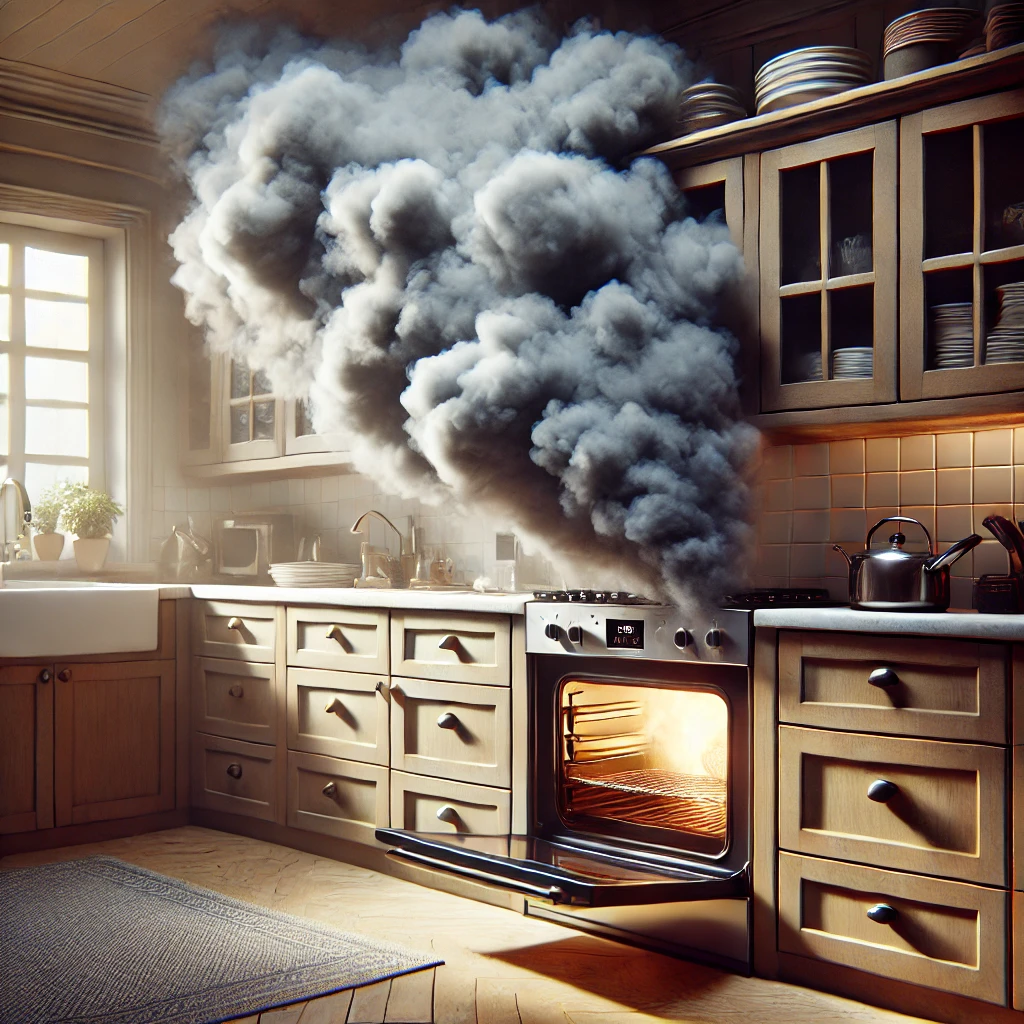
Top 5 Common Oven Problems and How to Fix Them
Your oven is a key appliance in your kitchen, but like any other device, it can develop problems over time. Many common oven issues can be fixed without needing a professional, saving you time and money. Here are the top 5 common oven problems and how to fix them.
1. Oven Not Heating Properly
The Problem: If your oven isn’t heating up or taking longer than usual to reach the desired temperature, it could be a sign of a faulty heating element, thermostat, or an issue with the temperature sensor.
How to Fix It:
- Check the Heating Element: Turn on the oven and look at the heating element (located at the bottom for bake and at the top for broil). If the element isn’t glowing red, it may be broken and need replacing.
- Test the Temperature Sensor: A malfunctioning temperature sensor can cause inaccurate temperature readings. You can use an ohmmeter to test the sensor’s resistance. If it’s faulty, replace it.
- Calibrate the Oven: If your oven isn’t heating to the correct temperature, it may need recalibration. Use an oven thermometer to check the temperature and adjust the settings based on your oven’s manual.
When to Call a Professional: If the heating element and sensor are working fine but the oven still isn’t heating correctly, it might be an issue with the control board, which requires professional help.
2. Uneven Cooking
The Problem: Your food comes out unevenly cooked—burned on one side and undercooked on the other. This is a common problem caused by poor heat distribution.
How to Fix It:
- Check the Oven Racks: Ensure that the racks are positioned correctly. For most even cooking, place your food on the middle rack. If you’re cooking on multiple racks, stagger the trays to allow better airflow.
- Avoid Overcrowding: If you overload the oven with too many trays or dishes, the heat won’t circulate evenly. Leave space between trays to ensure the air can flow around the food.
- Use the Convection Setting: If your oven has a convection setting, use it to help circulate heat more evenly, resulting in better cooking performance.
When to Call a Professional: If these steps don’t help, there may be an issue with your oven’s fan (in convection ovens) or heating elements that a professional can diagnose and repair.
3. Oven Door Won’t Close Properly
The Problem: If your oven door won’t close or doesn’t seal properly, it can cause heat to escape, leading to longer cooking times and higher energy usage.
How to Fix It:
- Check for Obstructions: Sometimes, food debris or a loose screw can block the door from closing fully. Inspect the hinges and door frame for any visible obstructions.
- Inspect the Door Gasket: The door gasket (rubber seal) around the edge of the oven door can become worn or damaged, allowing heat to escape. If the gasket is cracked or loose, it will need to be replaced.
- Check the Door Hinges: If the door is misaligned or sagging, the hinges might be worn out or damaged. You can try tightening the screws or replacing the hinges if necessary.
When to Call a Professional: If replacing the gasket or adjusting the hinges doesn’t solve the problem, the door latch or hinge mechanism might need professional repair.
4. Oven Light Not Working
The Problem: Your oven light has stopped working, making it difficult to check on your food without opening the door and letting out heat.
How to Fix It:
- Replace the Bulb: The most common reason for this problem is a burnt-out bulb. Turn off the power to the oven, unscrew the old bulb, and replace it with a new oven-safe bulb.
- Check the Light Socket: If a new bulb doesn’t solve the issue, the socket might be faulty. Inspect the socket for signs of damage or corrosion and replace it if needed.
- Check the Light Switch: Sometimes, the problem could be with the light switch itself. If the switch is faulty, it may need to be replaced by a professional.
When to Call a Professional: If the bulb and socket are working but the light still won’t turn on, it might be an electrical issue that requires professional attention.
5. Oven Produces Smoke
The Problem: Seeing smoke coming from your oven can be concerning, but it’s usually caused by spilled food or grease that’s burning inside the oven.
How to Fix It:
- Clean the Oven: Grease and food debris can accumulate inside the oven over time, especially on the heating elements. Turn off the oven and allow it to cool before wiping away any visible food spills or grease.
- Check the Heating Elements: Food and grease can spill onto the heating elements, causing them to smoke. Clean the elements carefully, and if they appear damaged or burned, consider replacing them.
- Use a Drip Tray: To prevent future spills, use a baking sheet or drip tray under dishes that might bubble over, such as casseroles or roasts.
When to Call a Professional: If your oven is still smoking after a thorough cleaning, it may indicate a malfunction with the heating elements or wiring, which should be inspected by a professional.
Conclusion
While some oven problems can be fixed with basic DIY techniques, others require professional help. Regular cleaning and maintenance can prevent many issues, but if you run into more complex problems, don’t hesitate to call in a professional to ensure your oven is working safely and efficiently. Whether it’s a broken heating element, a door that won’t close, or a light that’s gone out, addressing issues early can prevent more significant problems down the line.

